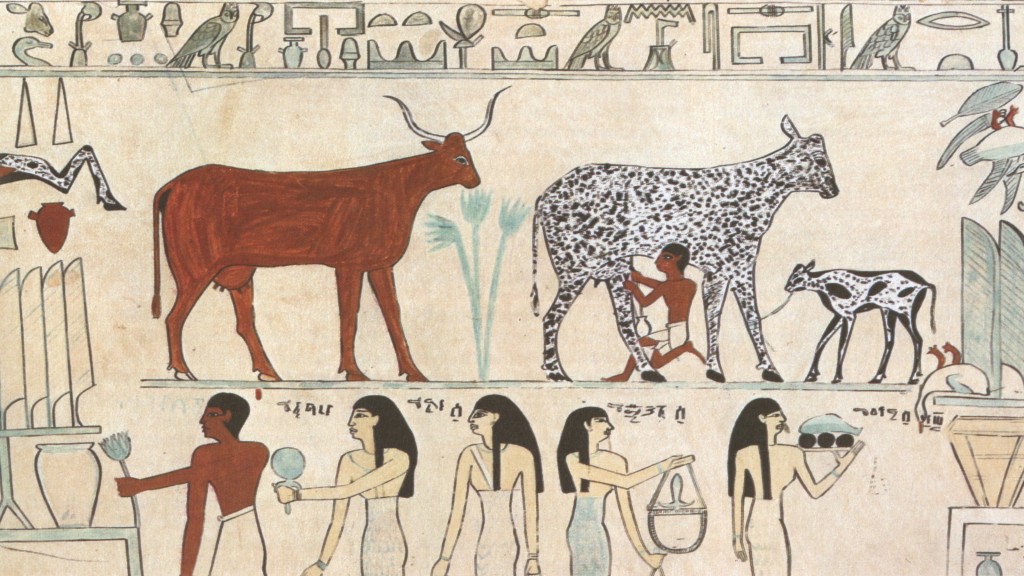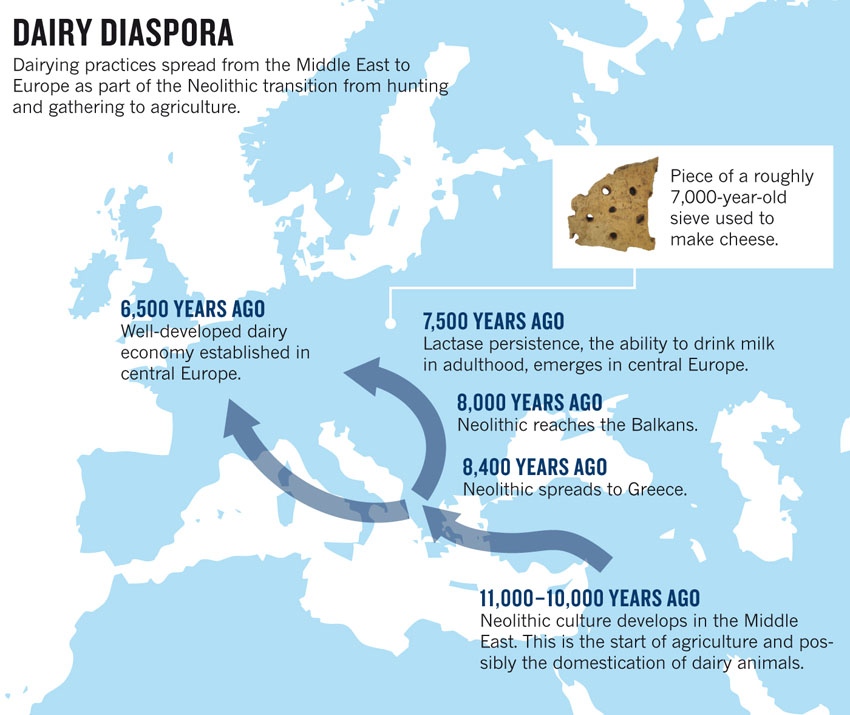Mysterious bowls covered with holes were found in central Poland by archaeologist Peter Bogucki back in the 1970s. Unsure of what their purpose was, Bogucki put them away in storage. In chapter six of Archaeology Essentials, one of the question we look at is: “What did they eat?”. There are multiple different ways to figure out what types of foods were eaten by a group of people, but Mélanie Roffet-Salque, a geochemist, decided to analyze the food residues hiding inside the bowls. By doing this she found milk fat, and the purpose of the bowls were uncovered. These bowls were used to separate the fatty part from the drinkable part of milk. This new information gives us a look inside the people who owned these peculiar bowls.
Originally, only babies and young children could tolerate lactose. As they got older their bodies would not produce lactose enzymes, causing them to become lactose intolerant. Around 11,000 years ago, Prehistoric people would decrease the levels of lactose by making dairy products like cheese and yogurt. These products are fermented. By going through the necessary processes of fermentation the lactose levels would decrease allowing them to be consumed. However, during the shift from hunter-gathers to farmers, there was another changed that occurred. A genetic mutation spread through Europe, that allowed adults to continue producing lactose enzymes. Instead of milk being a toxin, it was integrated into their diet. This shift changed what people drank and what they depended on.

Ancient Egyptian scene, depicting the use of cattle and the milk produced. Africa was also affected by this genetic mutation.
When this genetic mutation spread through Europe, farming already played a huge role in people’s lives. They relied on their crops for food. However, if crops were ruined by a storm, wild animals, or a drought, the farmers would lose those resources and would struggle to survive until next season. With the introduction of dairy products, a new balance came about. The products allowed the farmers to have a safety net. If their crops spoiled, or if there was not enough, farmers could turn to cattle for dairy products.
The gene did more than allow adults to consume diary products. It also affected the fertility rates of those who had the genetic modification. Those that had the genetic mutation “would have produced up to 19% more fertile offspring than those who lacked it” (Curry). Diary was not such another safe source of nutrition but an actually aid to insure the continuation of a culture. Being able to utilize chemical analysis to analyze cultural artifacts allowed us to see the introduction of dairy products into the lives of Europeans, and how it changed what they relied on and what they needed to utilize those resources.
Sources:
Curry, Andrew. “Archaeology: The Milk Revolution.” Nature. Nature Publishing Group, 31 July 2013. Web. 25 Sept. 2014. <http://www.nature.com/news/archaeology-the-milk-revolution-1.13471>.
Renfrew, Colin and Paul Bahn (2010) Archaeology Essentials. 2nd edition. Thames & Hudson, New York.
Pictures:
http://www.nature.com/news/archaeology-the-milk-revolution-1.13471
http://en.wikipedia.org/wiki/Neolithic_Revolution
More Readings:
http://www.nature.com/news/2007/070226/full/news070226-4.html
http://www.nature.com/news/pottery-shards-put-a-date-on-africa-s-dairying-1.10863


I am fascinated by the intersection between chemical and visual analysis that helped determine the function of these bowls. Although it was necessary to first learn that the bowls held milk, it was equally important to examine the bowls’ physical forms in order to discern their straining capabilities. Only when considering this information together can we conclude that the bowls served to “separate the fatty part from the drinkable part of milk.” Multiple analytical perspectives converged in order to find a more complete “truth.” I think this speaks well to the both the multifaceted nature of culture as well as the interdisciplinary nature of archaeology. Your post notes how a genetic change relating to milk impacted society in a multitude of ways, including culturally, economically and biologically among others. In order to address this complexity, the archaeological process similarly requires a variety of methods of perspectives.